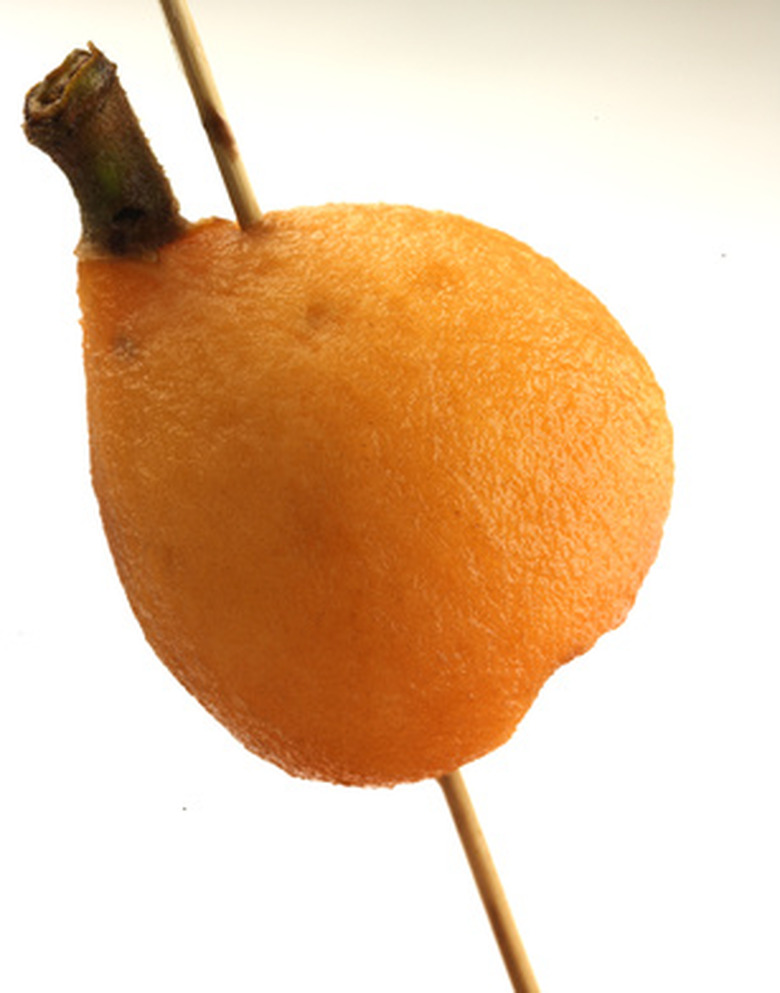Loquat Tree Diseases
The loquat is a dense evergreen tree native to the continent of Asia. This moderate-sized fruit tree has glossy, dark green foliage with copper-colored undersides. It produces fragrant white flowers which develop yellowish to orange-colored, pear-shaped fruit with a sweet yet acidic flavor. The loquat blooms in the late summer to fall months and harvests its fruit in the winter. With a moderate drought and salt tolerance, the loquat is susceptible to several diseases which can disfigure and stunt the tree's overall health.
Fire Blight
Fire blight is a serious bacterial disease that infects all parts of the loquat. Initial symptoms include the wilting of foliage and weakening of branches and twigs. Infected areas will begin to brown. As the infection progresses, the infected areas will take on a burned appearance. The loquat will begin to experience growth stunts, twigs and branches will die back and the buds and blooms of the loquat will shrivel and die. Control fire blight with a combination of pruning and chemical treatment. Prune away infected areas with sterile pruning shears that are sterilized between each cut. Cooper sprays are beneficial in preventing bloom infection.
- The loquat is a dense evergreen tree native to the continent of Asia.
- With a moderate drought and salt tolerance, the loquat is susceptible to several diseases which can disfigure and stunt the tree's overall health.
Phytophthora Root Rot
Phytophthora root rot is a soil-borne disease that infects the loquat through its root system. This disease develops in the soil during long periods of excessive moisture. Loquat trees located in poorly drained areas are especially susceptible to this disease. Infected loquat trees will display symptoms that include wilting, loss of vigor, dull green or yellow foliage and dieback. Symptoms often appear on a small amount of branches and twigs before overwhelming the tree. Full infection often occurs over several years. Control phytophthora with water management. The loquat's planting area should be well-drained and the tree should never be overwatered. Prune away severely infected areas with sterile shears. Fungicidal sprays are effective on ornamental loquats when used in combination with pruning.
- Phytophthora root rot is a soil-borne disease that infects the loquat through its root system.
- Fungicidal sprays are effective on ornamental loquats when used in combination with pruning.
Verticillium Wilt
Verticillium wilt is a soil-borne, fungal pathogen. This fungus can live many years in the soil, even without a host. Verticillium wilt infects the loquat tree through its root system, causing chronic symptoms. These symptoms include foliage yellowing and scorching, growth stunt, heavy seeding, and weakening and dieback of branches and stems. Infected loquat trees may also experience leaf curl, defoliation and vein yellowing. Fungicidal treatments will not control, prevent or cure verticillium wilt. Remove severely infected trees and replace with verticillium wilt-resistant vegetation.
- Verticillium wilt is a soil-borne, fungal pathogen.
- Verticillium wilt infects the loquat tree through its root system, causing chronic symptoms.
